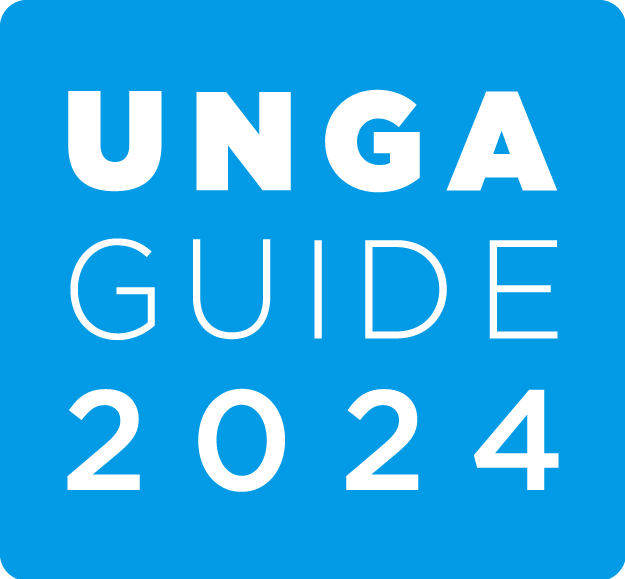Building Tomorrow: Youth-led Innovation in STEM and Civic Engagement
Our session explores examples of youth civic innovators pioneering the way forward in climate action, equal education, good health and well-being, technology, and community development through STEM-based activism. Within the health and well-being space, individuals such as Aditya Kumar Jha are at the forefront of scientific research. Aditya has developed an inexpensive, accurate, and feasible detection kit to prevent liver cancer progression, conducted investigatory research on analysis of genes and pathways associated with non-small cell lung cancer computationally, and worked on an in-silico based EGFR-targeted optimized drug for brain cancer while being awarded a plethora of international awards for his work, ultimately advancing SDGs 3 and 9. Also forging ahead in the health space, Roselyn Bi is working on bettering youth well-being and, specifically, improving students’ mental health through a combination of her time as class president, leadership in her county’s health and social issues committee, neuroscience research, and work with nonprofits focused on refugee youth empowerment, clearly advancing SDGs 3 and 10. Within the environment sector, advancing SDG 15, James Lian has taken a computational approach to the environmental sector, publishing work on his creation of a novel high-resolution greenspace detection method, developing algorithms to measure and work towards solving gerrymandering, with his work even being featured by Forbes. Furthermore, as a student representative on his town’s Complete Streets Committee, James also targets SDG 11. Finally, while advocating for safe-streets and climate provisions in a ten-year town development plan, James helped to create population and usage simulations as well as geospatial visualizations to help support miles of new bike trails. Also within the environment sector, Pearl Werbach has also adopted a research-based approach; recently she has presented her work on the implications of redlining, greenspace density, housing age, and income on heavy metal soil contamination at high-level research conferences and continues to spread knowledge on the subject through journalism as a scientific journalist at the Advanced Science Exploratory Program and as the editor in chief of her high school newspaper. As civic innovators, we also utilize technology to make an impact. For instance, Sampurn Kumar has developed a plethora of computational models, from a camouflaged terrestrial rover able to detect anomalies such as illegal deforestation and poaching with computer vision to an app-based kit as a one-stop solution to drunk driving, overspeeding, unsafe road conditions and road accidents; these efforts target multiple SDGs including 9, 11, and 15. Sarina Virmani has also utilized technology for scientific research, determining various gene expression that may affect cancerous tumors in the mouth and larynx as well as developing computational models that can detect types of lung nodules and masses with high accuracy, impacting SDGs 3 and 9. Furthermore, Max Charney is currently investigating the intersection of artificial intelligence and biology through the development of multimodal deep learning models to make predictions about the progression of cancer in patients, again targeting SDGs 3 and 9. Transitioning to the education sector, Max has also founded Career Chats, an organization where teens and leaders in their field have conversations in order to glean first-hand information, advice, and insights into various professions, working with SDGs 4 and 8. Haniah Ahsan, another young changemaker, drives equality in access to education throughout her country, Pakistan, which is home to over 23 million children that are not enrolled in school. Haniah has currently raised over $10,000 to provide free educational resources to students growing up in slum regions. Furthermore, she runs a free book exchange program that allows students to borrow and lend books to each other, encouraging them to build healthy reading habits which is an important contribution in a country with an illiteracy rate of over 37%. These contributions to furthering equal education in her country have helped her become both a HundrED Global Youth Ambassador and a Brand Ambassador for the State Bank of Pakistan’s Financial Literacy Program. Finally, the last target area our session focuses on is community development which can be seen in a variety of different forms. One primary approach to foster growth of developing communities is through the promotion of financial equality, or equitable access to monetary opportunities. Raj Vidhale is among the youth leading the push for financial equality through his contributions to microfinance as a part of Small Step Loans (SSL), a group that distributes interest-free loans to small businesses in developing countries worldwide. SSL has provided over $7000 in loans, continuing to expand worldwide. Raj is also a finance lead at Fidutam which has a microfinance platform providing over $400,000 in financial assistance to those in need. Ultimately, these diverse STEM perspectives and initiatives demonstrate how the work of youth can contribute to advancing the SDGs and work to create a more sustainable, equitable, and innovative future.
